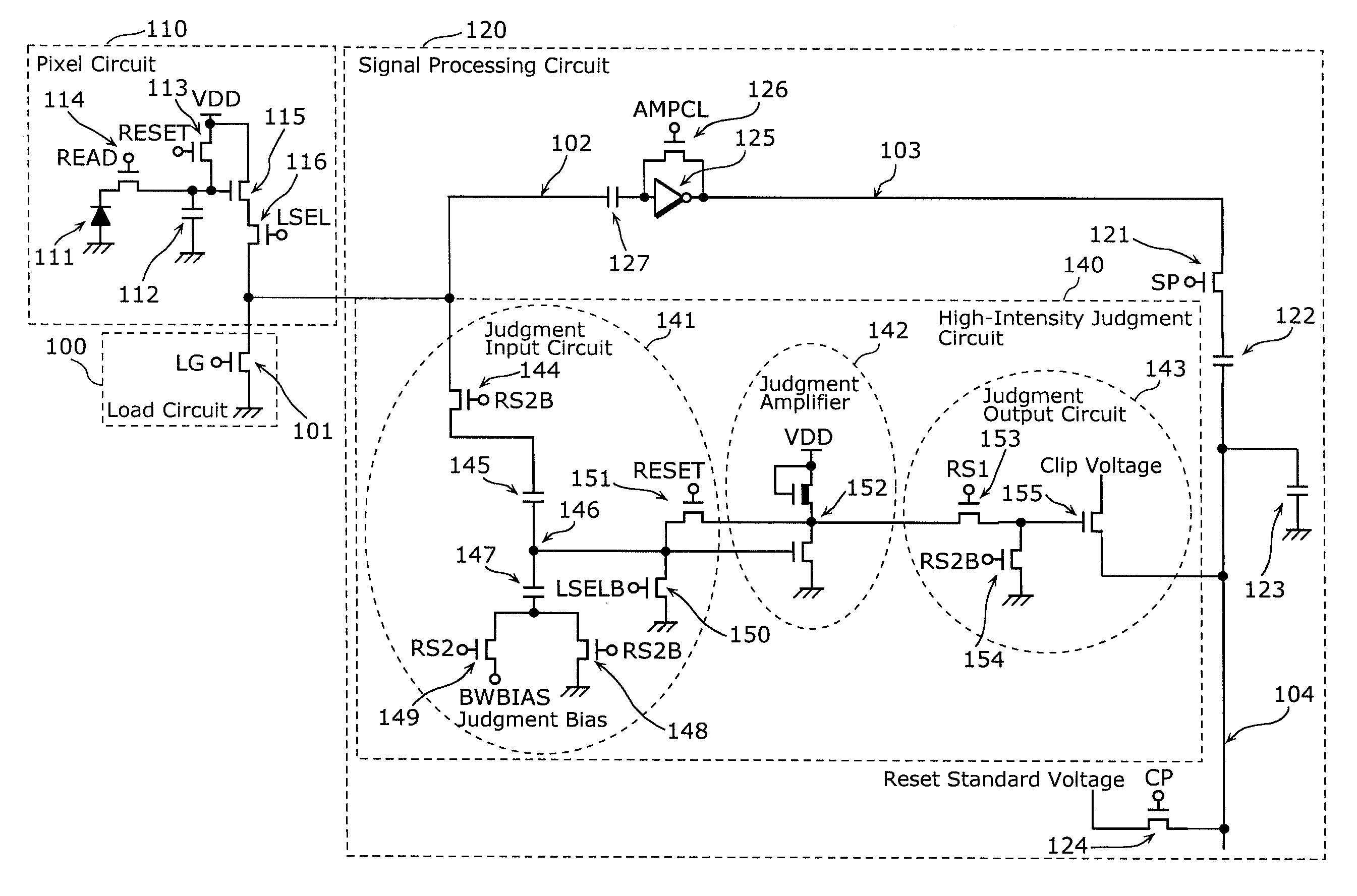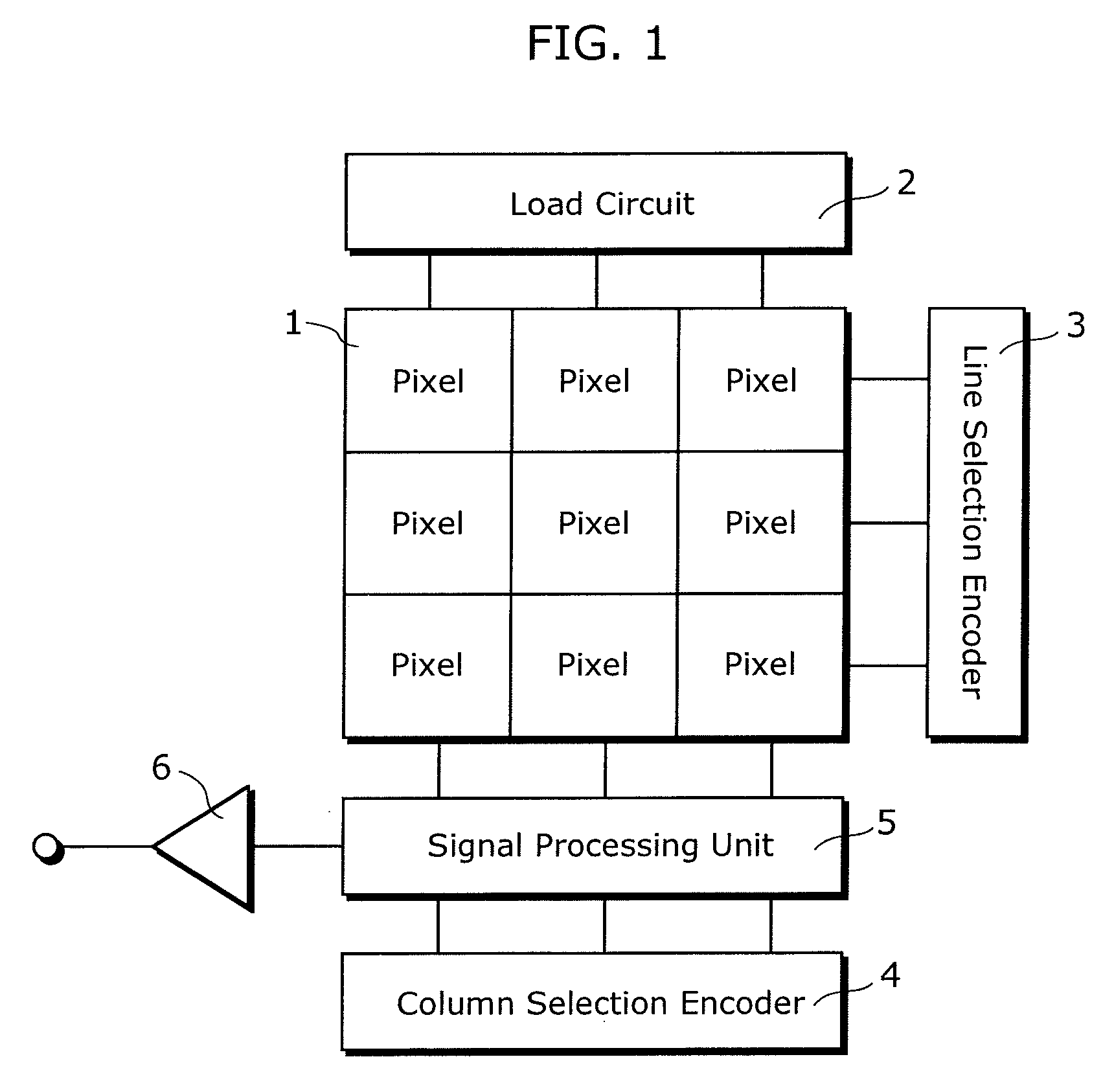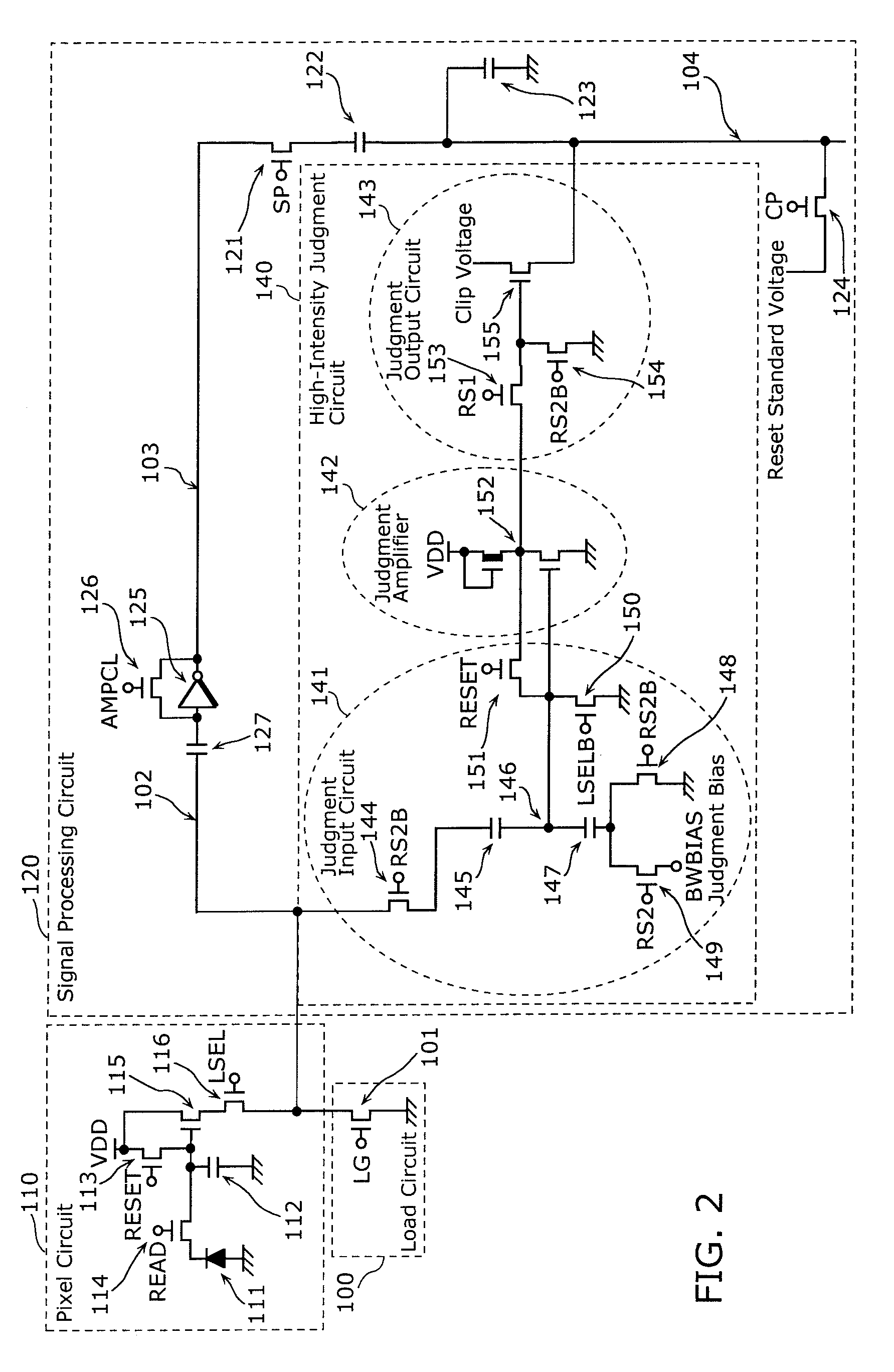Solid-state imaging device
a solid-state imaging and imaging device technology, applied in the direction of color television details, television systems, radio control devices, etc., can solve the problem of restricted intensity information range used to judge intensity, and achieve the effect of reducing driving timing and simplifying processing signals
- Summary
- Abstract
- Description
- Claims
- Application Information
AI Technical Summary
Benefits of technology
Problems solved by technology
Method used
Image
Examples
first embodiment
[0048]FIG. 1 is a diagram showing an overall configuration of a solid-state imaging device according to the first embodiment of the present invention.
[0049]The solid-state imaging device is an amplifier-type image sensor which has a function for outputting luminance signals in accordance with the amount of received light, and for avoiding the abovementioned black-crush phenomenon. The solid-state imaging device in configured of an imaging unit 1, a load circuit 2, a line selection encoder 3, a column selection encoder 4, a signal processing unit 5, and an output circuit 6.
[0050]The imaging unit 1 is an imaging region made up of plural pixel circuits (unit cells) arranged either one- or two-dimensionally, and includes a photoelectric conversion unit which converts light to an electric signal. Each pixel circuit outputs a reset voltage, which is a voltage when the photoelectric conversion unit is reset, and a read voltage, which is a voltage arising due to photoelectric conversion per...
second embodiment
[0095]Next, a second embodiment of the present invention shall be described. The present second embodiment is identical to the first embodiment, with the exception of the configuration of the high-intensity judgment circuit. Only the points in which the present embodiment differs from the first embodiment shall be described hereafter.
[0096]FIG. 6 is a detailed schematic focusing on one pixel in the solid-state imaging device of the present embodiment. This schematic shows a load circuit 100, a pixel circuit 110, and a signal processing circuit 120 (which includes an intensity detection circuit 140a). Most of these circuits are configured of NMOS transistors; however, some of the circuits (a judgment amplifier 142a) include a PMOS transistor (in other words, are configured of a CMOS).
[0097]The high-intensity judgment circuit 140a is configured of a judgment input circuit 141, the judgment amplifier 142a, and a judgment output circuit 143.
[0098]As opposed to the first embodiment, a ju...
third embodiment
[0111]Next, a third embodiment of the present invention shall be described. The present third embodiment features the same circuit configuration as that of the second embodiment; however, the driving timing of the solid-state imaging device differs from that of the second embodiment. Only the points in which the present embodiment differs from the second embodiment shall be described hereafter.
[0112]In the second embodiment, judgment of whether the light entering the device is in the normal state or the high-intensity state is performed after a difference signal indicating the difference between the reset potential (the potential of the capacitor 112 in timing B) and the read potential (the potential of the capacitor 112 in timing C) is accumulated in the sampling capacitor 123. However, in the present third embodiment, judgment of whether the light entering the device is in the normal state or the high-intensity state is performed simultaneously with the accumulation of the differe...
PUM
 Login to View More
Login to View More Abstract
Description
Claims
Application Information
 Login to View More
Login to View More - R&D
- Intellectual Property
- Life Sciences
- Materials
- Tech Scout
- Unparalleled Data Quality
- Higher Quality Content
- 60% Fewer Hallucinations
Browse by: Latest US Patents, China's latest patents, Technical Efficacy Thesaurus, Application Domain, Technology Topic, Popular Technical Reports.
© 2025 PatSnap. All rights reserved.Legal|Privacy policy|Modern Slavery Act Transparency Statement|Sitemap|About US| Contact US: help@patsnap.com



